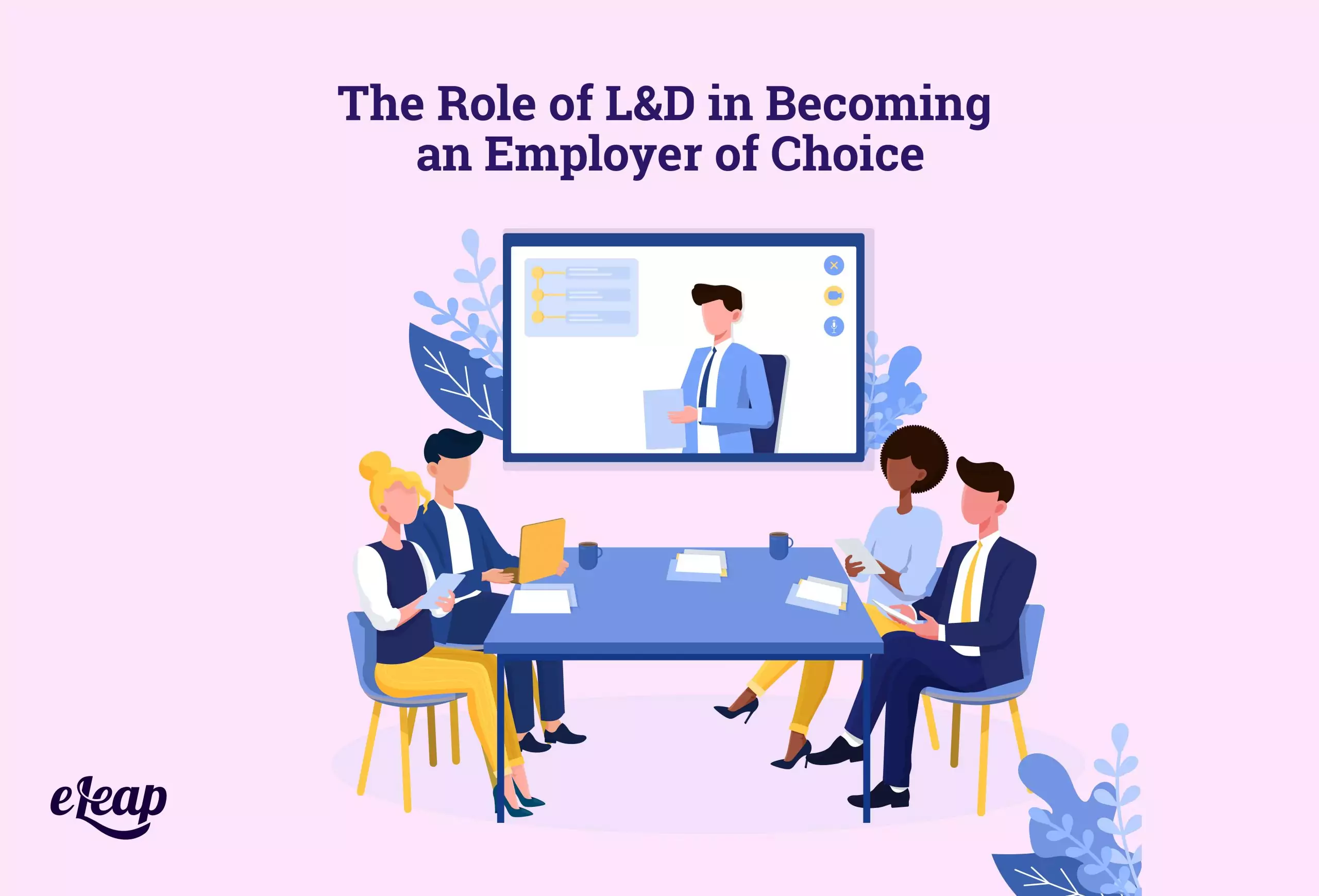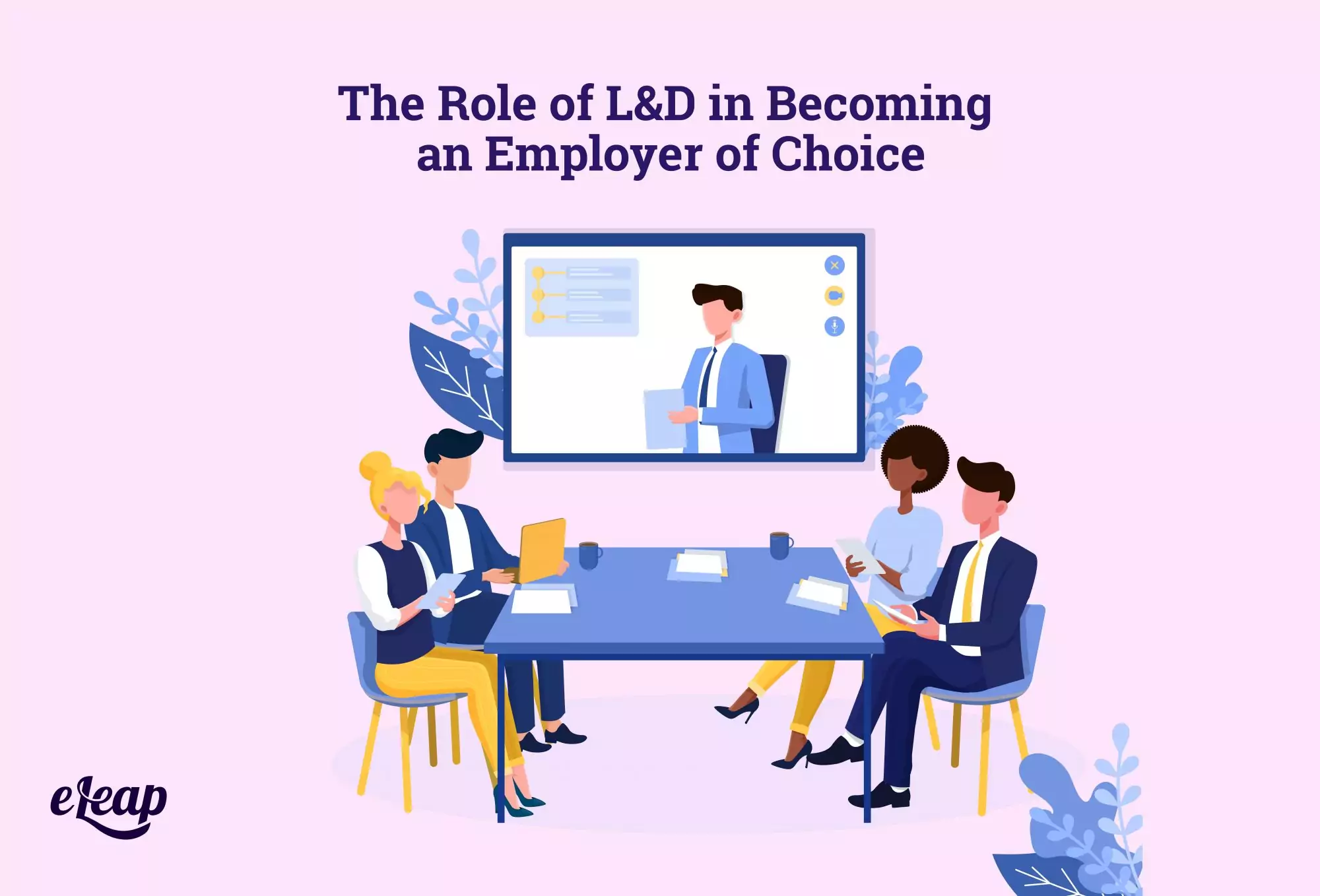The Role of L&D in Becoming an Employer of Choice

The right talent is critical for business success. Your people deliver insight, innovation, and the skills you need to succeed. However, if you cannot attract the right candidates, it becomes impossible to grow and move forward. Learning and development (L&D) should be part of your organization’s culture. This ensures you’re recruiting and developing the right talent.
It’s about more than just having a solid onboarding process or a robust recruitment process. Top talent naturally gravitates toward so-called “employers of choice.” That is, the people with the most to offer to want to work with companies that treat their employees well and where they feel they have a lot to offer. Job seekers today are empowered, discriminating, and willing to wait for the right position rather than simply taking whatever job comes their way to make ends meet.
For organizations, this is a two-edged blade. It means that there is the opportunity to attract top talent and staff your business with skilled, passionate people who will be with you for a long time to come. However, it also means that it’s becoming harder to do that. The good news is you have many resources at your disposal to become an employer of note (Download the Skeptic’s Guide to Employee Development to get started). One that you might have overlooked is your learning and development initiative.

L&D and Employers of Choice
Why does L&D matter when it comes to recruitment? It all comes down to understanding what today’s employees are looking for. Again, they’re not seeking “a job”. They want to work with a company that offers them a future and not one marked by stagnation. Today’s workers want an employer that will support them now and provide them with opportunities to grow and develop. They crave challenges, expect support, and will settle for nothing less.
Your learning and development initiative is one way that you can provide the support they’re seeking while speaking directly to their ability to improve themselves professionally and personally.
- Almost 60% of Millennials (the largest segment of today’s workforce) say that learning and growth opportunities are extremely important to them.
- A solid L&D initiative shows potential employees that you are interested in helping them achieve a brighter future.
So, what goes into creating a leading L&D strategy? How do you use that initiative to attract top talent?
Understanding the Elements of the Right L&D Strategy
While there is no one-size-fits-all approach to L&D strategy development, solid offerings all share some things in common. Take the tips below and customize them to your organization’s needs, and you’ll be well on your way to becoming an employer of choice.
Agile and Accessible: The days of using a PC in human resources to complete the training are long gone. Today’s learners are time-starved and expect something more. Make sure that you have a cloud-based LMS that allows an agile, accessible approach to learning and development. What does that mean? Simply put, your LMS should be accessible through mobile devices and should allow learners to complete modules whenever and wherever it works for them. This allows them to take advantage of natural breaks in their day, learn when they are best prepared to do so, and maximize information retention.
Make It Personal: Generic L&D efforts are doomed to failure. Today’s learners have been conditioned by a lifetime of personalization efforts from the brands they interact with daily. You must take the same approach to learning and development. Personalize the learner experience as much as possible. That means going beyond having an individual employee login and dashboard, though. Some of the most important personalization steps include the following:
- Self-led learning capabilities
- Learning recommendations based on user experience and previous content
- Content tailored to their unique needs and career path
- Modules/lessons delivered in the format that works best for each learner
- Relevant, meaningful content that can be applied immediately
Leadership Buy-in and Support: It’s not enough to have the right LMS or take a personalized, agile approach to learning. If your C-suite doesn’t buy into the value of and need for learning and development, that will seep into your culture and cripple your L&D efforts. The C-suite needs to be on board with learning and development from the very beginning. After all, they set the example that others within the organization will follow. If leaders don’t value learning, then neither will employees. However, if leaders value and pursue learning and development, employees will, too.
Align with Business Strategy: While employees will pursue learning for their own benefit, they also need to understand how it dovetails with your overall business strategy. This is a bit like playing connect the dots. Every component of the learner’s journey should map to your business strategy in a clearly understandable way. At a high level, make sure that your learners:
- Understand how what they are learning applies to their current position
- How do their current position/duties affect their team or department
- How their department/team’s efforts support overall organization goals
- How additional learning will benefit their career, and how their career can benefit the business
It’s really all about creating a holistic vision that encompasses reality accurately. Nothing exists in a vacuum, but when L&D efforts are disconnected from business strategy, it can seem that way. Take the time to help employees understand the impact of their learning not just for their own futures but for that of the business itself.
Skills-Based Development: An effective L&D strategy must be based on an in-depth skills analysis. In short, you need to know where the skills gaps are within your organization and how you intend to close them. Tie this analysis into both employee development and recruiting so that you’re not only attracting the right talent but also promoting from within. Both of those are essential considerations in becoming an employer of choice.
Put It Together
Becoming an employer of choice is not something that can be achieved overnight. It requires the right strategy, an understanding of your existing skills gaps and those that may develop over time, as well as an attractive L&D strategy that supports employees in becoming their best selves. However, with intentionality and the right technology, it is possible to stand out from the crowd for all the right reasons.